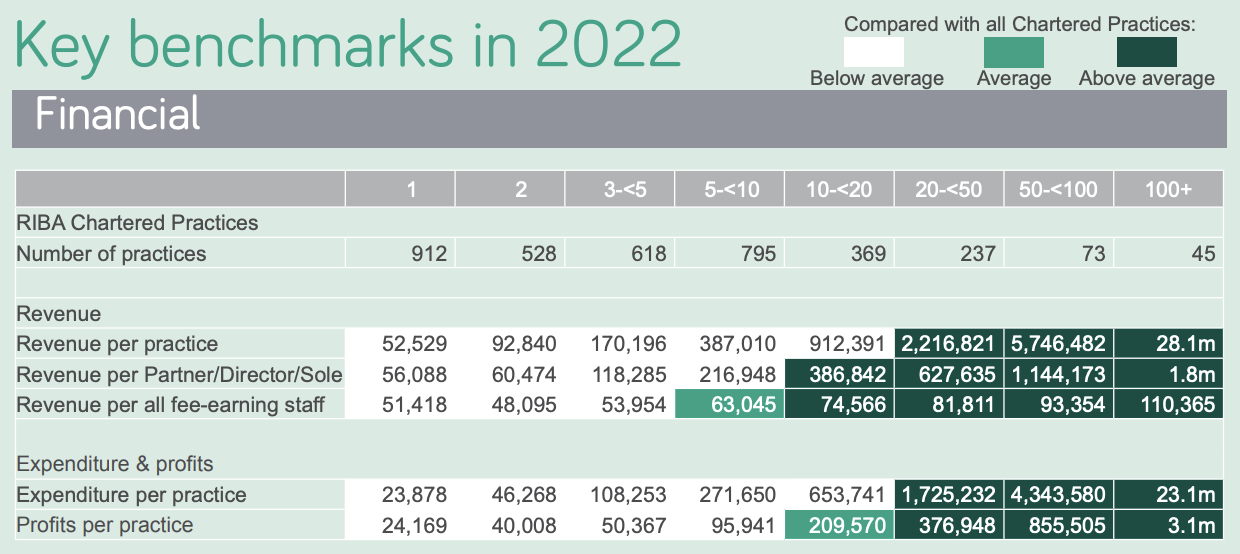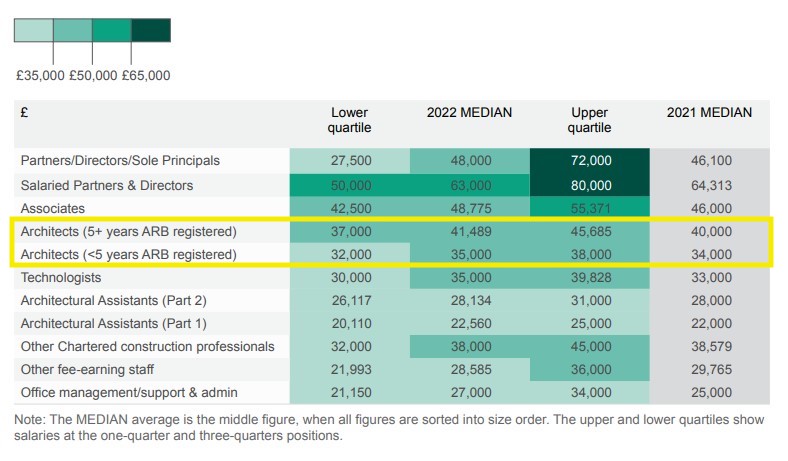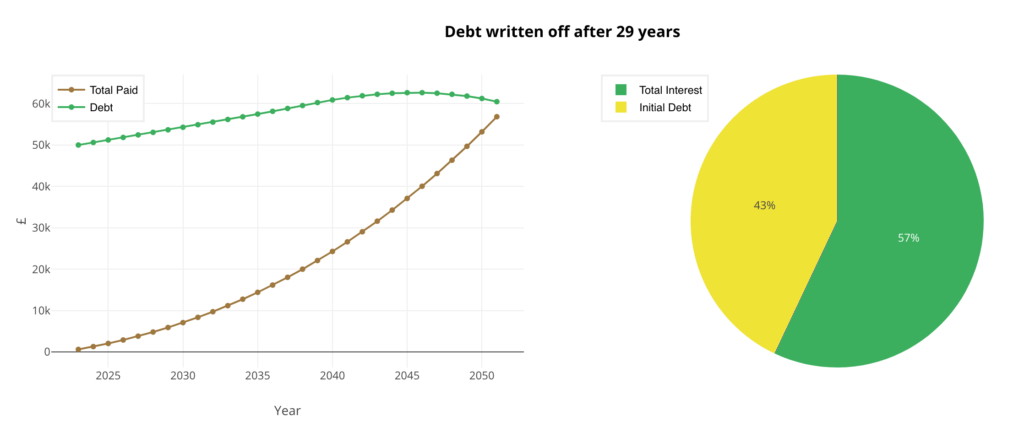
The 20th century version of the architectural profession is no longer tenable. The business model is broken, and I’m looking for answers.
Low salaries, long hours, unpaid overtime and crippling levels of student debt…
- Low Salaries: The median London salary for a fully qualified architect (8 years of education) is circa £35,000.00/year, or £13.00/hour after tax (a part 1 architectural assistant with a 3 year degree can expect between £18,000.00 and £24,000.00/year).
- Long hours and unpaid overtime: It’s well established and acknowledged that architectural assistants are chronically overworked and can clock in well over 60 hour weeks (I frequently recall friends and colleagues calling me late at night telling me they are still at the office despite having stopped being paid 6 hours ago).
- CAD-Monkey Work: Most architects joined the profession with ambitions and desires to design and create incredible spaces and buildings, despite this, many of those architects end up drawing the same bathroom and window details in perpetuity within large practices that treat labour in an industrialised fashion. This has led to the term “CAD-Monkey” or “BIM-panzee” reflecting commonly used softwares.
If it wasn’t already clear, I love architecture and design but it’s simply not feasible to pursue a career in a profession that has these kind of stats if you also value being able to have a degree of financial freedom, support a family, and enjoying things outside of architecture.
I refuse to accept the mentality of “You should do it for the love of it, not for the money”.
Agree or disagree, I happen to believe that loving what you do, and making money are not mutually exclusive.
Why don’t architects make as much as bankers or lawyers?
Many people assume that the reason architects don’t make as much money as one would think is because they are underpaid by the companies which employ them. This has been the stance of many individuals and organisations seeking change in the architectural profession (such as Future Architecture Front (FAF) https://fafront.co/). However, upon inspecting the data from the Royal Institute of British Architects (RIBA), we can see this narrative doesn’t hold true.

Figure 1: RIBA Benchmarking 2022 Executive Summary
As highlighted in the grouped data above, the median revenue generated per qualified architect working within a practice in 2022 was £63,045/year.
It seems obvious to say, but a company must first pay all of it’s expenses, and then seek to make a reasonable profit margin, say 20%, on this revenue to make it worth the business risk.
Based on that and the median data above, one can see that an architecture practice must therefore cover the total cost of employing an architect for £50,400 or less (the total cost of employment includes not just the employee’s salary, but also all other overhead associated with employing someone, such as office space, software licenses, bills, insurance, employer contributions etc).
Even if we assume that a practice is operating very efficiently from a costs perspective, and only paying say £7,000/year in associated employment costs, it becomes immediately obvious that the very top end of what it would be feasible to pay this employee is £43,400/year.
The equation for the profitability of an architecture business looks something like this:
Profit = Revenue – Salaries – Associated Employment / Operating Costs (per employee).
Therefore, if we rearrange this equation to calculate for maximum salary given a minimum profit margin of 20% and a minimum associated employment cost of £7,000/employee, we see that the salary would be £43,400:
Salary (£43,400) = Revenue (£63,000) – profit (£12,600) – associated employment costs (£7,000)
And as it turns out, this is pretty close to what we see when one looks at the salary data… which shows that for an experienced architect, 50% of the salaries range between £37,000 – £45,685/year:

Figure 2: 2022 RIBA Business Benchmarking Report
Beware of Loan Sharks
For someone who has invested a minimum of £50,000 in their education at a 6%+ compounding interest rate on most student loans, this is a terrifying equation.
Presently, equipping yourself with an architectural degree with the intention of working at a traditional architecture practice will net you a negative return on investment.
In fact, if you use Student Finance England (SFE)’s own loan repayment calculator, assuming you have a £45,000.00/year salary and that you make your recommended monthly payment (based on your salary), due to the cumulative interest, your loan will continue to grow larger and larger for 29 years, at which point it will finally be written off by the government.
The reality is that the majority of architects will never pay off their student loans, instead the tab will be picked up by the government (which is the equivalent of the entire country subsidising architecture students)

Figure 3: SFE Loan Repayment Calaculator
It’s Not Greed, It’s Low Fees
It’s clear from the revenue and salary data above that the fundamental issue is therefore not architects being underpaid by their employers. Even those who operate their own architecture practices are not exactly rolling around in dough. Activist groups such as Future Architecture Front (FAF) https://fafront.co/) who seek fundamental change in the architectural profession would be better off focussing on why their employers businesses aren’t making much money, rather than the symptomatic issues of long hours and low pay for architects.
99% of architectural practices just simply don’t make much money per employee. The revenue generated per architect is low, because the fees which are commanded by architecture practices are low. Compare this with the revenue generated per lawyer at a top 100 UK Law firm – £305,000 (https://www.thelawyer.com/uks-largest-200-firms-full-ranking/), and we can suddenly understand why lawyers are paid more. With that said, in the law profession, salaries are actually a much lesser percentage of business revenue than in the architecture industry. For example, the average revenue generated per lawyer at a top 100 UK Law firm is £305,000 whilst the average lawyer at such law firm retains only circa 30% of that revenue on an average salary of circa £100,000, meanwhile, the average architect retains 65% of the revenue they generate (£41,489 of £63,045 in revenue). A large part of this disparity is likely to be due to the higher overhead costs incurred in running a law practice vs an architecture practice, but regardless in this sense, the architecture profession is better off from an employee value standpoint.
Now that we have established it’s not at it’s roots an issue with employer exploitation, or a lack of employee unionisation, but rather a lack of revenue – why don’t architects charge more?
“Why don’t Architects charge more?”
Let’s come back to the lawyer analogy for a moment. How do lawyers manage to charge such high fees? There’s a few factors to consider here:
1. Supply and Demand.
In the architecture industry, an equilibrium price is determined by various factors, including the balance between supply and demand, competition among architects, and the perceived value of architectural services. This scenario resembles perfect competition, where numerous architects are willing to undertake projects for lower compensation, driven by the philosophy of “do what you love” – prioritizing passion over financial gain. Consequently, prices are pushed downward. Demand in the architecture industry remains relatively stable, albeit subject to fluctuations tied to the development cycle. During periods of economic growth, demand may slightly increase as more construction projects are initiated, while it may decrease during downturns. However, overall demand tends to remain consistent. The expansion of the architect population over time intensifies competition within the industry. Despite this growth, the volume of projects being built or designed may not significantly expand, leading to a situation where supply exceeds demand. This surplus contributes to the downward pressure on prices as architects compete for available projects.
2. Tangible and Intangible value.
In the realm of value, both tangible and intangible elements come into play. Lawyers often deliver tangible value with their ability to achieve high-stakes outcomes. Conversely, great architects offer immense value, although it’s frequently intangible or challenging to measure. While it’s relatively straightforward to assign a monetary value to avoiding incarceration (pretty much all the money you have) or winning a legal case, quantifying the value of an aesthetically pleasing and functional space is more complex. Assuming a foundational level of technical proficiency and compliant design, determining the end value of superior design becomes a nuanced task. While it’s feasible to command higher rates per square foot for a building of higher quality, factors beyond exceptional design—such as location, transportation connectivity, and local amenities—largely influence this rate. Beyond this baseline assumption of standard quality, it proves challenging to precisely quantify the value generated by a remarkable architect and an outstanding design.
The harsh reality is that the architectural profession, and the consultancy business model which they work through, isn’t exactly a cash cow. Architects are viewed in most small projects as a luxury due to the proliferation of design and build contracts, and the construction industry in the UK is fairly stagnant with respect to new starts for medium and large scale projects.
We can see that the most successful design practices who are able to make semi-meaningful amounts of money (the likes of Foster+Partners and Thomas Heatherwick) are largely international practices at this point, and operate as a concept designer for large investment projects more so than technical architects. Their fees are largely proportionate to the premium which can be charged by the developer for the brand of the architect. This isn’t an approach which is accessible to the majority of firms and I suspect the biggest will continue to get bigger due to these economic drivers – leaving a gaping desert between the small practices and the big practices. Those who try to exist in the middle will die.
There is such a thing as a “bad business” and I believe that most architecture practices are simply premised on a model which will continue to struggle going forwards.
Weakness is not a virtue.
I’ll leave with a final point, consider this: by the time architects step into the equation, fundamental decisions have often been cast in stone. The power dynamics inherent in this arrangement are starkly evident – the party with the authority to dismantle a project (the client) ultimately wields the reins.
Thus, despite the architect’s creative prowess and professional expertise, their control over the project’s trajectory remains tenuous at best.
It’s a sobering realization that challenges the very essence of architectural practice. How can architects positively impact the design of our environment, or champion sustainability when they lack the leverage to influence pivotal decisions? The rhetoric urging architects to take up these causes feels hollow against the backdrop of their sidelined position within the industry. Those truly dedicated to the craft understand that genuine stewardship demands more than just a seat at the table – it necessitates command over the proverbial project “steering wheel”.
Yet, in today’s architectural landscape, the driver’s seat is occupied by the client, with architect relegated to the cramped quarters of the rear trunk.
For those who seek to impact meangingful change, it’s a broken system.
Architects find themselves operating from a position of powerlessness and blaming clients or contractors for the shortcomings of the industry is a futile exercise; the onus lies squarely on architects to chart a new course towards a more empowered future.
Weakness is not a virtue.
A new beginning…
Whilst the state of the profession is bleak, the most difficult of times are often filled with the greatest opportunity. Despite the challenges our architecture profession faces, I refuse to give up on my ambition to achieve both architectural success and financial freedom. It’s clear however, that it will not be feasible to realise these ambitions by following the traditional pathway, and therefore, I must pave my own way… the way of The Sovereign Architect.
In my next post What is “The Sovereign Architect“? I explain this new modus operandi for architects, it’s inspirations, and how it can be used by architects to achieve both architectural success and financial freedom.

0 Comments